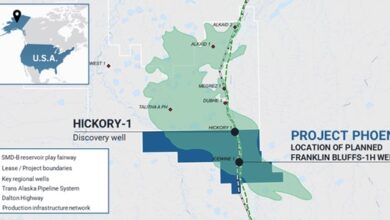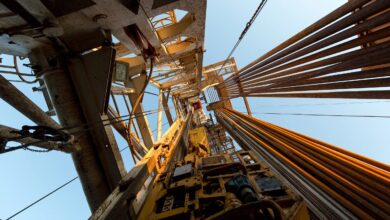Field trials demonstrate e-frac efficiencies

By Stephen Whitfield, Associate Editor
Last year, NOV conducted an eight-month field trial of its Ideal electric fracturing (e-frac) technology across several reservoirs in Texas and New Mexico. The tests, completed in collaboration with NexTier Oilfield Solutions, focused on measuring the efficiency gains that can be generated by using an e-frac system. The tests also aimed to demonstrate that the Ideal technology can help operators maintain high-horsepower operations without putting excessive strain on the frac motor.
“What we wanted to focus on was, how do we harness the electrical capability in the e-frac system to drive better fracturing performance, lower NPT and improve efficiency on location?” said Travis Bolt, Product Development Manager and Head of R&D for Pressure Pumping Equipment at NOV. “The cost of fracturing continues to be high. We’re seeing an increase in complexity around frac operations. We’re all converging on that question of, what’s the next step for fracturing equipment?”
At the 2022 SPE Hydraulic Fracturing Technology Conference in The Woodlands, Texas, on 3 February, Mr Bolt discussed both the general efficiencies that can be realized from an e-frac system, which uses a natural gas reciprocating engine as its primary power source, as well as more specific field testing results for the Ideal system.
Control of equipment to improve reliability was a major focus of the field testing. This primarily involved examining the turndown ratios of the motors, or the ratio of a motor’s speed relative to the base speed at which it can be operated safely at 100% torque without suffering thermal damage. An e-frac system typically has a 100:1 turndown ratio, meaning that it can operate safely at 100% torque while running at 1% of its base speed. As an example, Mr Bolt noted that for an e-frac system nominally rated to run at 1,800 rev/min, a 100:1 turndown ratio means that the engine can operate safely at 100% torque while running at 18 rev/min.
This ability to generate torque at low motor speeds means that operators can more easily apply torque in a controlled manner, progressively increasing it over a period of time instead of applying maximum torque all at once, which could place unnecessary stress on the motor and pump. It also allows users to increase pressure from the frac pump without overstressing the system.
The ability to apply torque in a controlled manner, combined with an electric motor’s ability to generate torque values greater than 100% for short periods of time, can help minimize the need for manual intervention on downhole issues. To demonstrate this capability with the Ideal system, one of the tests during the field trials focused on stuck augers. A 12-in. auger was run on a 45° angle with both the e-frac and a conventional frac system. Support testing prior to the field test showed that the motor required between 225% and 275% torque to break the auger free without manual intervention.
Testers applied torque progressively to the e-frac system, reaching 260% torque in 3s. As a conventional diesel frac system is unable to attain that level of torque, manual intervention is typically required when the auger becomes stuck.
By providing the ability to address a downhole issue without stopping operations, “we’ve prevented a person from having to go out into the field and manually interact with a piece of equipment,” Mr Bolt said.
Another focus area of the testing was the process of converting raw fuel into energy applied at the wellhead, and its impact on horsepower and engine efficiency, defined as the ratio of work performed to the heat provided by an engine. Electricity is subject to the Joule effect and magnetic losses as it’s transported within a conventional system. These losses can account for up to a 2.5% loss in overhead line transmission. Another loss in the electrical system is the inefficiency of the step-up and step-down transformer, which typically ranges from 1% to 2%.
An e-frac system can mitigate the losses typically seen in a conventional system, primarily because it consumes the same amount of power as it generates, Mr Bolt said. NOV and NexTier found that an e-frac system powered by natural gas internal combustion generators can achieve a 4% increase in efficiency over conventional systems.
“With mechanical systems, we have to worry about the initial energy conversion process of diesel fuel into mechanical energy through a transmission, or through a pump,” Mr Bolt said. “Typically, you have inefficiency at the generator source. You lose energy at the transmission due to magnetic losses, and then you have more inefficiency when you drop down in torque. But when we looked at the data from our tests, what we found was that, due to the initial efficiency gains that you have with natural gas-powered systems, we’re seeing an increase in efficiency versus a conventional system. In the world of efficiencies, a 3-4% increase is a big deal.”
NOV and NexTier have said they expect to deploy the Ideal fleet in the first half of 2022. DC




